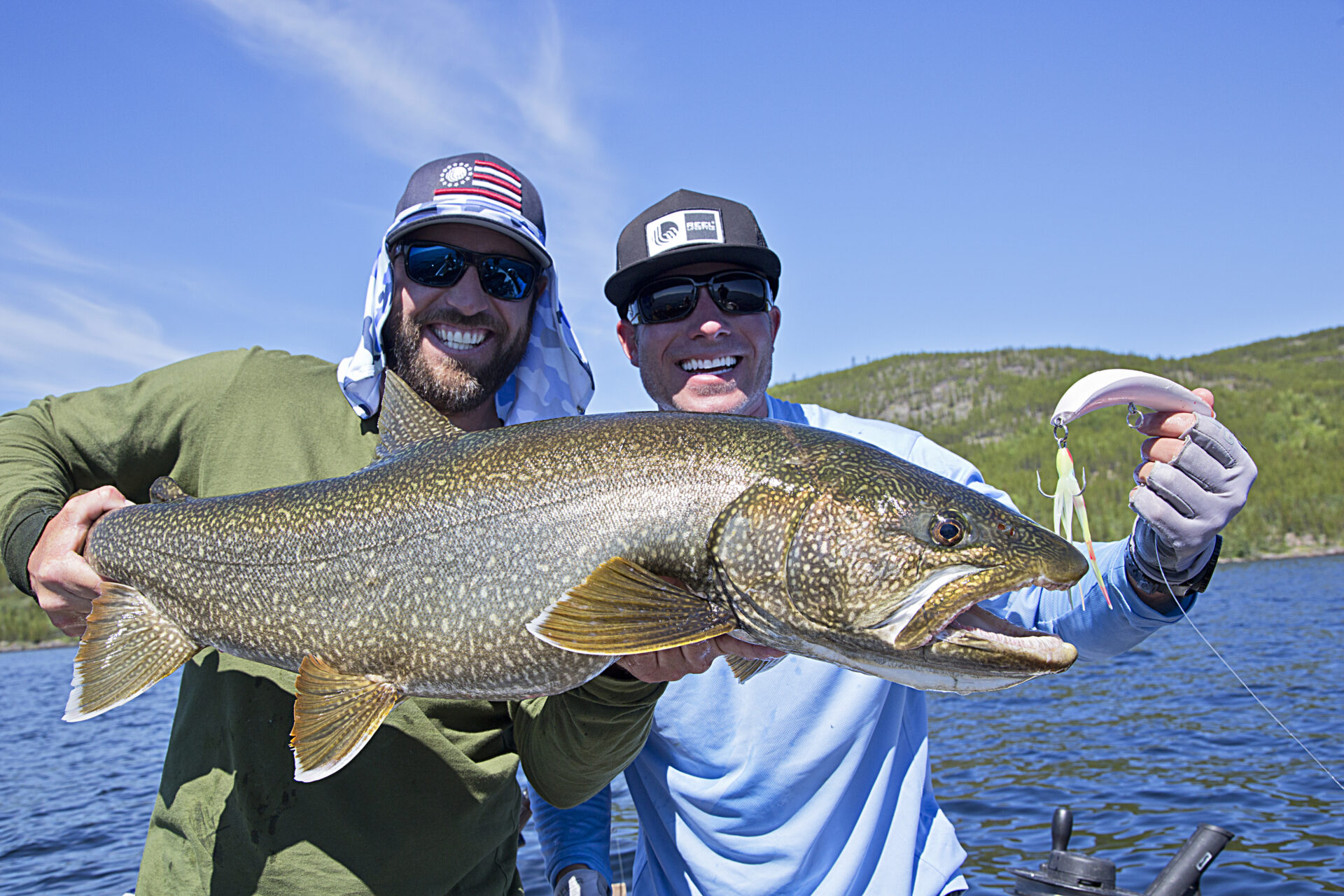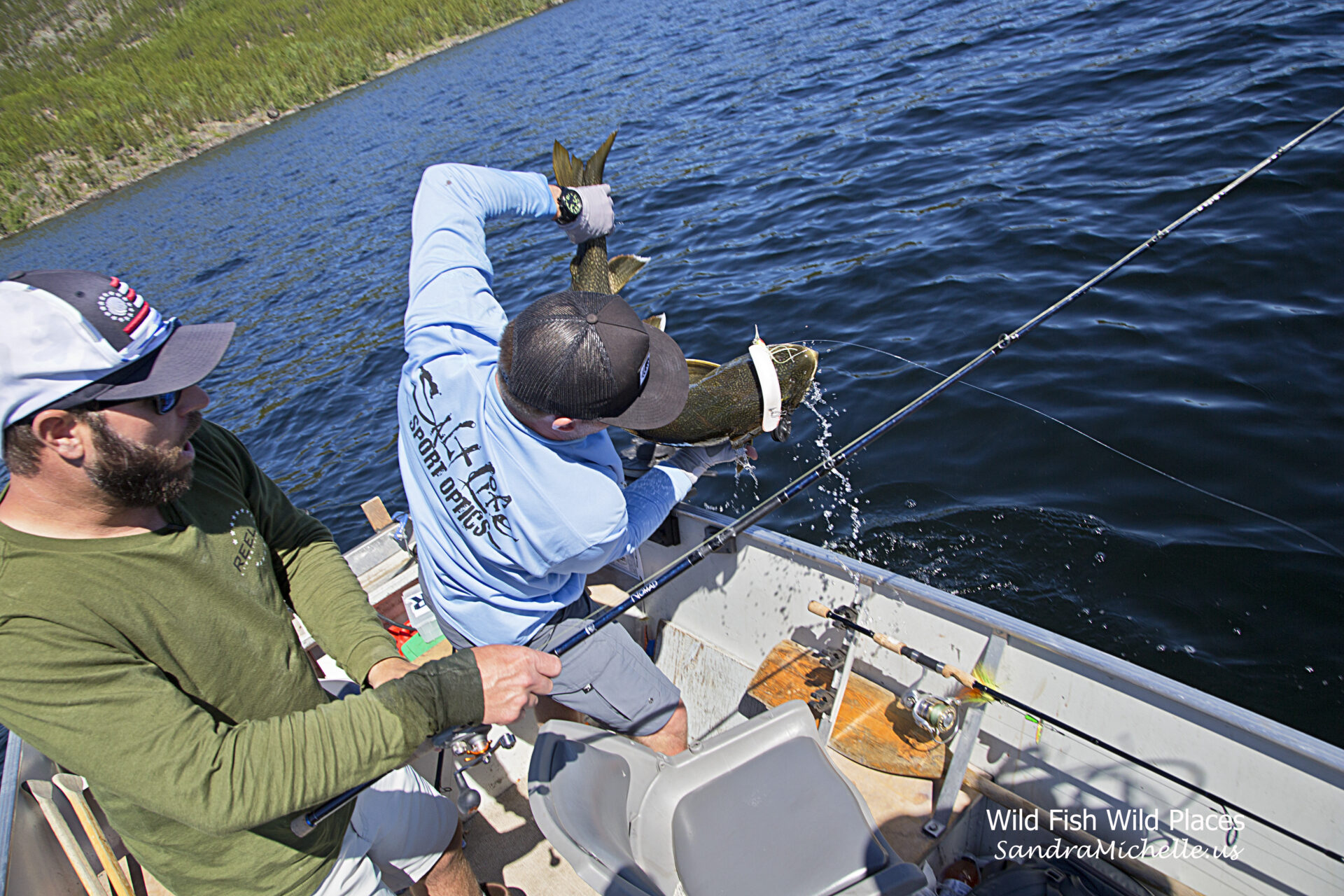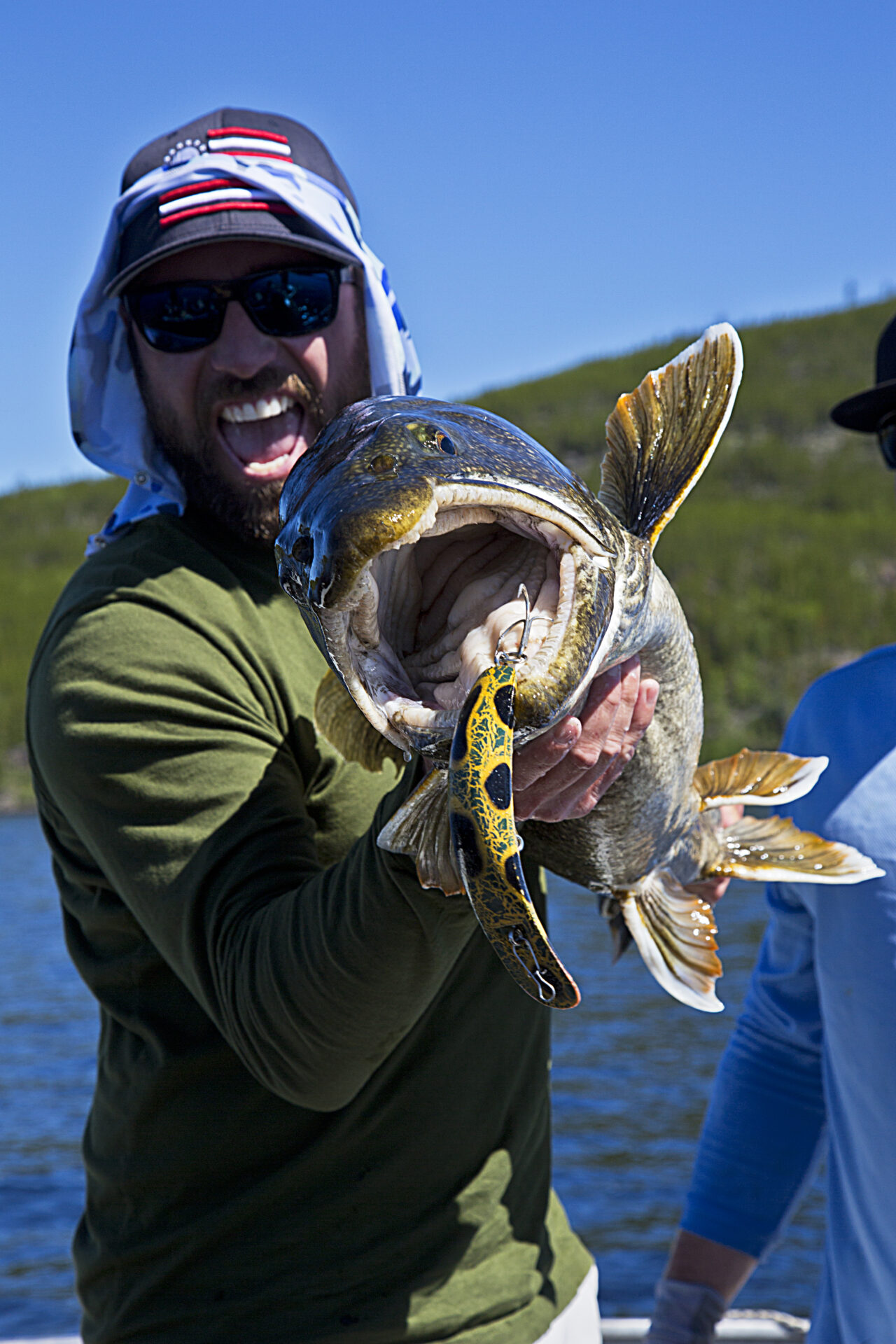Get On The Bottom

Chasing lake trout for the better part of my life across Canada and the U.S. I’ve learned a lot of different tricks in a lot of different situations. On a recent trip to Tazin Lake in Northern Saskatchewan it was no different!
The first few days started with pike but the afternoons were spent chasing Lake Trout at a place called “Trout Rock” , I guess the name Big fish Rock was taken, trolling T-60 Flatfish around 100 feet of water with 8 oz of weight and slow trolling. After day three we had only boated a handful of trout, one big fish but we thought we should be doing better. Day 4 we decided to change to a boat that allowed us to have a good quality fish finder and a downrigger to possibly help put the puzzle together. We started the day looking for fish in some different areas but found ourselves back to Trout Rock by noon chasing the one pattern we knew at this point. We started printing fish on the sonar in the 120’ range and lying right on the bottom! Up until this point we had been told that the trout were in 60/80 of water and an 8 oz weight was plenty good for getting these fish…..wrong! One thing I have learned over the years about fishing Lake Trout that is consistent everywhere I go is this; whether it’s 10’ or 150’ making contact with the bottom no matter what lure you are using us key. Dreu and I decided to put a T-60 Frog with 16 oz of weight on his and a T-60 Pearl with a squid on the back hook on a downrigger on my side. Now, when running a downrigger for Lakers on the bottom being lazy doesn’t work..at all, so myself running the motor, downrigger and keeping everything in line is a non-stop activity.

We finally had what we felt was an acceptable presentation for the fish, T-60’s, 1.5 MPH, fish on the bottom and good electronics. I started by letting my Flatfish behind the downrigger ball about 25 feet on my Okuma line counter reel, this shorter distance allows you keep more accurate contact with the bottom, dropped the weight until it hit bottom (yes I said it, bang the weight on the bottom don’t be scared) and started to experiment with how many reels on the scotty I needed to come up the keep that Flatfish digging in the mud. Dreu was on the other side of the boat experimenting with letting line out and feeling the bottom. The first fish printed on the sonar and within seconds the downrigger slammed down and the fight was on as we landed a huge 45” long 26” girth Laker. Not long after that fish Dreu was hooked up on another giant due to a big sweeping inside turn for him that allowed his Flatfish to be right on the bottom!
The rest of the week continued just like that, the Lakers would move into their feeding areas in the afternoon and we would target them on the bottom with great success, 32 Lake Trout over 20 pounds with 4 over 40 pounds in three days! Had we not gone the extra mile to really get in front of these fish it would have been a fairly unsuccessful trip.

What made the difference?
- Dragging the Flatfish on the bottom was one of the most important things to get these fish to bite. Everyone else was dragging their rigs with 8 oz of weight giving them a max depth of about 60’ (not bad, only 60’ too shallow) so adding another 8 oz of weight or using a downrigger made a significant difference. Allowing the T-60’s to drag and dig in the mud were provoking the fish to eat
- Good electronics were another very important factor! We were able to pinpoint fish location, exact speed (1.5 was the magic number) and waypoints to stay on the fish longer with more accuracy.
- Running structure perpendicular instead of parallel was one of the final pieces of the puzzle that lead us to being much more successful. Sure, it’s way easier to run your boat along the structure trying to stay in a certain depth of water so you don’t have to work your setups as much but seriously quit being lazy! Run those Flatfish across the ledges, up the humps and off the drops! That’s what the fish are looking for I promise.
- Don’t be afraid to change color. We would always start our day with a frog and pearl T-60 but if we printed 3 fish on the sonar and no takers, I would start ripping through colors until I found what was working. The Frog stayed consistent during that week but we had great success on a pearl, chrome/chartreuse and the last day clown was killing the fish!
If you are a crazy trout fishing junkie like me or just starting to learn how to chase them, pay attention to these tips and I promise you will be more successful.
